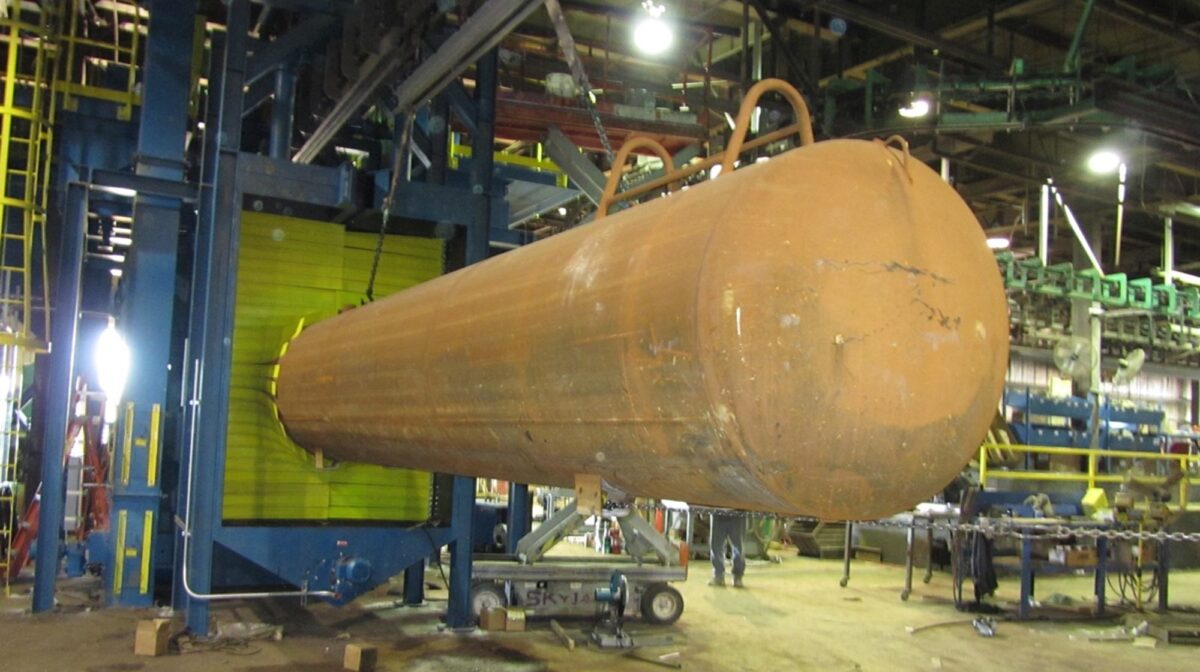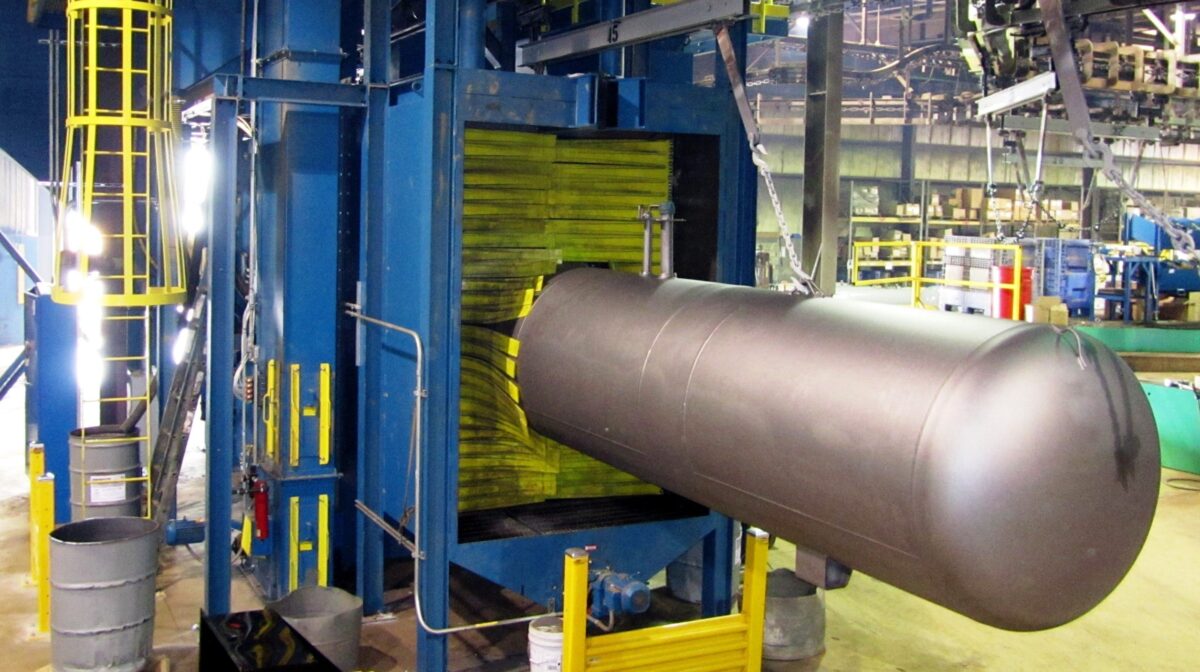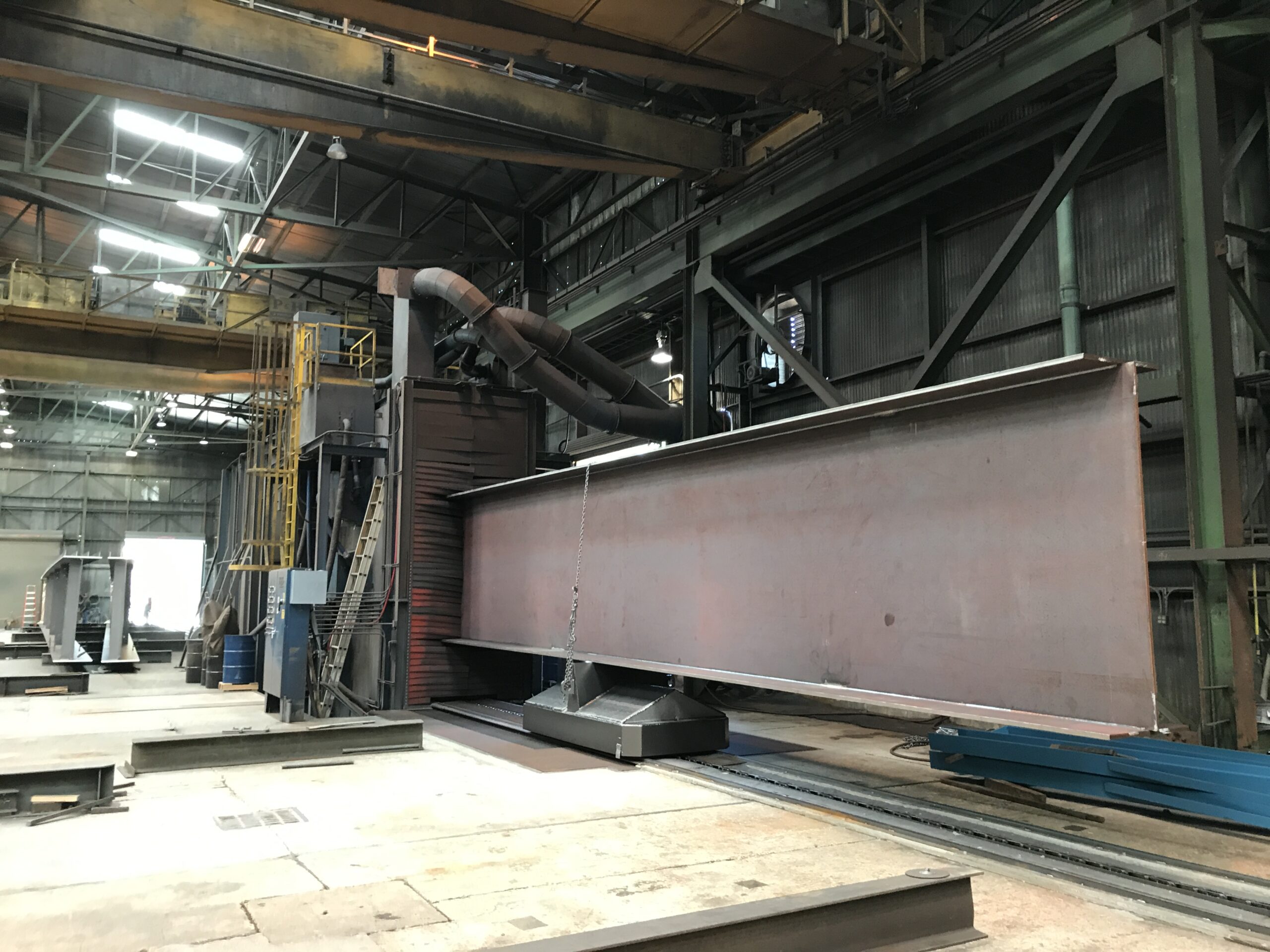Abrasive blasting is the operation of forcibly propelling a stream of abrasive material against a surface under high pressure to smooth a rough surface, roughen a smooth surface, shape a surface, or remove surface contaminants. A pressurized fluid, typically air, or a centrifugal wheel is used to propel the media.
Abrasive blasting of steel substrates can provide the best possible surface preparation for coatings adhesion. If done properly, abrasive blasting thoroughly cleans the surface and creates a surface profile for mechanical adhesion. To achieve the economy available through abrasive blasting, the operator must maintain the productivity and efficiency of the cleaning system through careful attention to all of its components.
Slide the bar above to view the rail car before and after blasting
IN WHEEL BLASTING, a wheel uses centrifugal force to propel the abrasive against an object. It is typically categorized as an airless blasting operation because there is no propellant (gas or liquid) used. A wheel machine is a high-power, high-efficiency blasting operation with recyclable abrasive (typically steel or stainless steel shot, cut wire, grit, or similarly sized pellets). The size of the wheel blast machine, and the number and power of the wheels vary considerably depending on the parts to be blasted as well as on the expected result and efficiency.
Wheel shot blast machines are known for being more versatile allowing for a wider range of parts, production output and finish requirements. Wheel blast machines are available in more design configurations and capacity sizes for low or high production parts requirements. Most automotive remanufacturers use small steel shot media which offers a fine profiled consistent finish. Other medias such as steel grit, stainless shots and grits, aluminum shot as well as plastics or organic medias such as fruit pits and shells of nuts are used. A properly configured and sized wheel blast machine is capable of propelling a much greater volume of media, which in turn creates shorter cycle times and ultimately higher production output.


ASTM D7055 Significance and Use: The procedures described in this practice are designed to provide hot-rolled, carbon steel panels with uniform and reproducible abrasive blast cleaned surfaces for testing of coatings. This practice covers the procedures to be followed in the preparation (by abrasive blast cleaning) of hot rolled steel panels for laboratory testing of coatings.
